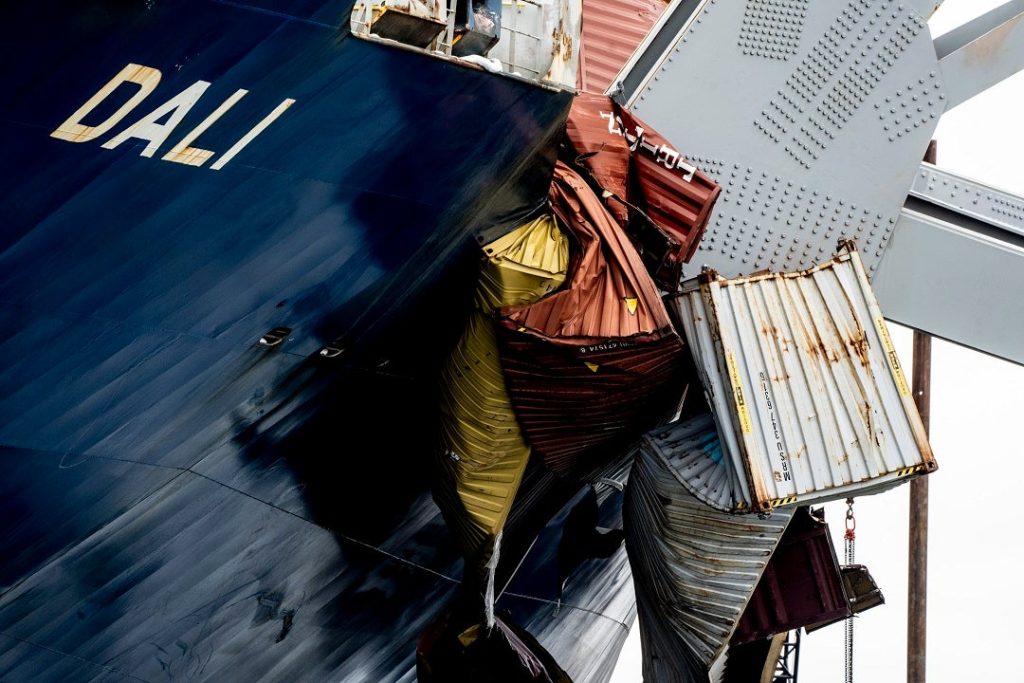Maryland officials opened a second temporary channel at the site where a cargo ship struck and brought down the Francis Scott Key Bridge in Baltimore last week. The new channel is 14 feet in depth, while another channel on the north side of the bridge is 11 feet deep. However, the center of the bridge is 50 feet deep, requiring large cargo ships to have depths of at least 35 feet. Governor Wes Moore stated that conditions are unsafe for rescue divers due to rough weather conditions. Lightning in the area prevented recovery operations from removing sections of the bridge on Monday.
Efforts to remove the sunken portions of the Francis Scott Key Bridge from the Patapsco River have been hampered by the inclement weather. Crews attempted to remove one section on Monday but were unable to operate cranes due to lightning in the area. Coast Guard Rear Adm. Shannon Gilreath explained that it is unsafe to conduct lifts during lightning storms, making the recovery process challenging from a safety perspective. Buoys were being set up on Tuesday morning to help vessels navigate the waterways.
The cargo ship, Dali, collided with the bridge on March 26, causing it to collapse and resulting in the deaths of six construction workers. Only two bodies had been recovered as of Tuesday. Governor Moore announced that the state would establish a scholarship for the families of transportation workers who die on the job. The tragic incident has highlighted the dangers faced by those working in the transportation industry, and the scholarship aims to provide support to families who have lost loved ones.
House Republicans were divided after President Biden committed to the federal government covering the costs of reconstructing the Francis Scott Key Bridge. The political implications of the bridge collapse have created debate and controversy within the Republican party. The reconstruction efforts continue to face challenges due to the weather conditions and the difficulty of removing the sunken portions of the bridge from the river. The safety of recovery crews and divers remains a top priority as the process moves forward.
Despite the hurdles posed by the weather and the complexity of the recovery operation, officials are working tirelessly to address the aftermath of the bridge collapse. The opening of a temporary channel and the setup of buoys are among the steps being taken to ensure the safety of vessels navigating the waterways. The tragic loss of life in the incident has prompted calls for support for the families of the victims, leading to the establishment of a scholarship for transportation workers. The recovery and reconstruction efforts will require cooperation and coordination among various agencies and stakeholders, with safety being a paramount concern throughout the process.


